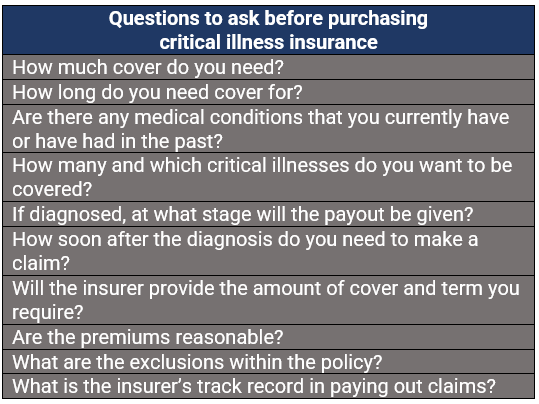Health insurance is one of the most popular types of insurance you need to get. How can health insurance protect your wealth? Read the article to find out the benefits of health insurance

For those who have built up substantial wealth and assets, having the right insurance is crucial in protecting against potentially devastating losses. Health insurance is among the types of coverage that can play a key role in helping anyone preserve their net worth.
In this article, Wealth Professional delves deeper into this form of coverage. We will discuss the types of policies available for high-net-worth individuals and how they can use health insurance to their benefit.
How can high-net-worth individuals use health insurance to protect their wealth?
Wealthy individuals can use health insurance to protect the earnings and assets they’ve worked hard for if they fall ill. They can also use this type of coverage to access the best medical care possible. There are several types of health insurance available in the market, each with its unique set of features that high-net-worth people can take advantage of.
Disability insurance
Disability coverage is designed to protect what is perhaps a person’s most significant asset – their ability to earn a living. Policies typically pay out a portion of one’s income if they are unable to work because of an illness or injury.
Most long-term disability policies, however, offer a low maximum, usually $10,000 a month, which is insufficient to meet the needs of high-income earners. Depending on how the premiums are paid, this amount can be fully taxable, further reducing how much policyholders receive.
For wealthy individuals, taking out high-limit disability insurance is a better option as such policies can provide up to $150,000 monthly or $2 million in annual coverage tax-free.
How does disability insurance work?
Also referred to as income protection insurance, disability coverage provides financial protection if the policyholder suffers an unexpected illness or injury that leaves them unable to work or earn a living. Policies pay between 60% and 85% of a person’s regular income until they recover and resume working or until the end of the coverage period, whichever comes first.
Policyholders can opt for the maximum coverage amount that their financial situation allows and purchase additional top-ups to fit their insurance needs. Disability insurance is also portable, meaning the insured can take it even if they change employers. Another advantage of such policies is that if policyholders pay premiums using their after-tax income. The benefits they will receive are non-taxable.

What are the different types of disability insurance?
Generally, there are two types of disability coverage:
- Short-term disability insurance: Provides income coverage for short-term or temporary health issues, usually lasting between six and 26 weeks – although it can be extended up to 52 weeks (one year). Benefit payments can start as soon as the insured has used up their sick leaves or one to 14 days after a claim is submitted.
- Long-term disability insurance: Provides cover for more persistent health issues, with coverage starting right after the short-term disability period. Depending on the insurer, coverage can last between two and five years, and can extend until the age of 65 – the standard retirement age – if the policyholder is still unable to work.
How do insurers define disability?
Insurers have three main definitions of disability, according to Canada.ca. These are:
- Own occupation: Policyholders are eligible for benefits if a disability prevents them from performing the duties of their pre-injury occupation.
- Regular occupation: Works similar to own-occupation plans, but with one main difference – if the policyholder chooses to work in a different profession, their benefits will either be reduced or fully withdrawn.
- Any occupation: The most stringent type of disability insurance where policyholders are ineligible to receive benefits if they can work in any other profession. This type of plan also has the lowest premiums.
A recent poll also revealed that more Canadian workers now view mental issues, such as depression and anxiety, as a disability.
Critical illness insurance
Most critical illness insurance policies pay out a lump sum that the policyholder can use to replace lost wages or pay for treatment-related costs.
Catastrophic illnesses often require expensive medical care, and these costs can easily eat away at one’s finances. Having critical illness coverage can help protect a person’s wealth against exorbitant medical bills.
Another strategy industry experts recommend is opting for a return-of-premium feature, which allows the policyholder to reimburse all premiums paid if no claim has been made against the insurance plan.
How does critical illness insurance work?
Critical illness insurance pays out a “living benefit” as opposed to a death benefit in life insurance policies. It is called a living benefit because it is paid while the policyholder is alive, regardless of whether they have recovered from the illness or not.
Just like life insurance, however, critical illness cover comes in two types:
- Term critical illness insurance: Covers illnesses suffered by the policyholder for a fixed period.
- Permanent critical illness insurance: Covers the policyholder until death. Premiums can be paid upfront, typically over a 10 or 20-year period.
What does critical illness insurance cover?
In 2018, the Canadian Life and Health Insurance Association (CLHIA) updated its Critical Illness Benchmark Definitions to standardize the language used for common conditions across the industry.
The association listed and defined 26 “common illness, conditions, and health events” in its publication. It should be noted, however, that the protection that critical illness insurance offers is not limited to these afflictions. Some insurers provide coverage for illnesses not in CLHIA’s list and even have their own definitions.
The 26 conditions that CLHIA defined in its latest benchmark are:
Cancers and tumours:
- Benign brain tumour
- Cancer (life-threatening)
Cardiovascular:
- Aortic surgery
- Coronary artery bypass surgery
- Heart attack
- Heart valve replacement or repair
- Stroke (cerebrovascular accident)
Neurological:
- Bacterial meningitis
- Dementia, including Alzheimer’s disease
- Motor neuron disease
- Multiple sclerosis
- Parkinson’s disease and specified atypical Parkinsonian disorders
Vital organs:
- Kidney failure
- Major organ failure on waiting list
- Major organ transplant
Accident and functional loss:
- Acquired brain injury
- Blindness
- Coma
- Deafness
- Loss of independent existence
- Loss of limbs
- Loss of speech
- Paralysis
- Severe burns
Other:
- Aplastic anemia
- Occupational HIV infection
What should individuals consider when taking out critical illness insurance?
Before taking out critical illness cover, there are several questions that wealthy individuals need to ask to ensure that they find a policy that best fits their needs. The table below lists some of these questions:

Long-term care insurance
A good portion of Canada’s high-net-worth demographic has reached or is approaching senior age. This makes long-term care coverage a sound insurance option, especially with the high cost of long-term care services, which can easily exhaust a person’s retirement savings.
This is also the reason why many industry experts recommend taking out long-term care insurance for those who can afford to. Apart from helping seniors protect their retirement fund, this type of coverage gives them the option to get the best care possible.
Similar to critical illness insurance, some long-term care policies offer a return-of-premium option for policyholders who do not make a claim.
How does long-term care insurance work?
Long-term care insurance pays out the cost of medical and nonmedical services provided for senior-aged individuals who have lost the ability to care for themselves. Long-term care benefits are non-taxable in Canada.
Generally, policies follow two types of models:
- Income-style benefit plan: Pays out a pre-set benefit amount every month for a set period, although most insurers cap the duration at two years.
- Reimbursement-style plan: Just like typical health plans, this provides reimbursements for the long-term care services provided. Most insurers also impose limits on the amount the policyholder can receive.
Who are eligible for long-term care insurance?
To qualify for benefits, the policyholder needs to get certification from a reputable health care provider that the can no longer perform at least two of the following “activities for daily living,” or ADLs, without direct assistance.
- Bathing: The ability to get in and out of bathroom to clean oneself
- Continence: The ability to control urine and bowel movements
- Dressing: The ability to put on or take off one’s clothes
- Eating: The ability to feed oneself
- Toileting: The ability to get on and off the toilet
- Transferring: The ability to get in and out of a bed or chair
Most policies require beneficiaries to pay for care services out of pocket for a certain timeframe. This usually lasts between 30 and 90 days, after which the insurance provider begins the payments. Long-term care insurance plans pay out up to a daily limit for care until the lifetime maximum is reached.
Why do high-net-worth individuals need health insurance?
It is often assumed that the need for health coverage decreases as individuals reach a certain net worth as they also hit a stage where they can afford the best medical care possible. But in reality, the more a person’s wealth grows, the more health insurance can prove valuable in helping them protect their assets. Here are some of the reasons why health coverage may be crucial for high-net-worth individuals.
It protects their most valuable asset
For many affluent people, their most important asset is their ability to earn an income. This is often where their financial security lies. Because of this, protecting this asset should be the cornerstone of their financial plan.
This is where critical illness and disability insurance come into play. These types of coverage serve as a form of financial cushion if they are unable to work, either temporarily or permanently.
Health risks increase as they grow older
Getting older is a fact of life and as people move closer to senior age, the risk of developing chronic and other age-related health issues also grows. During this stage, critical illness and long-term care insurance can play a crucial role in keeping their wealth and assets protected.
You have a family history of expensive medical conditions
Surviving a critical medical condition presents its share of challenges, including the exorbitant medical expenses associated with treatment and recovery. Because of this, taking out critical illness insurance is beneficial, especially for those who have a family history of expensive medical conditions.
What do you think about these insurance policies? Do you think health coverage is something wealthy people should invest in? Use the comment box below to share your thoughts.



